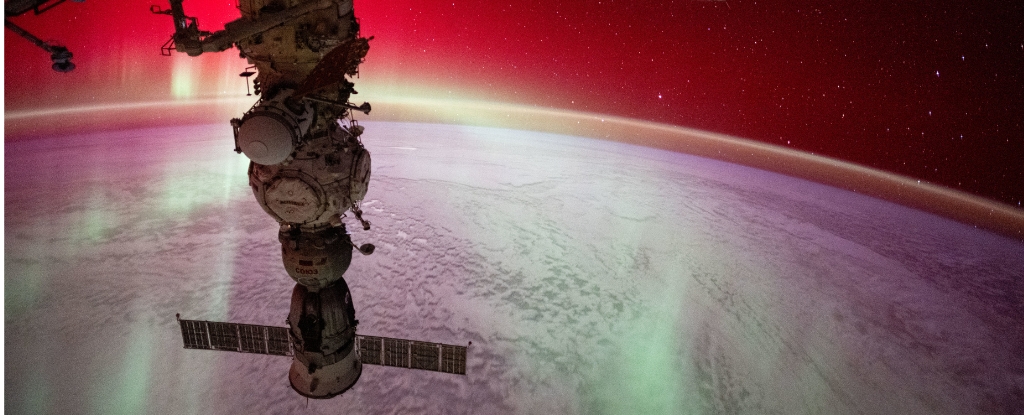Products You May Like
Every year, the International Space Station produces some of the world’s best photography.
Astronauts tend to be technically skilled with a camera, yes. Many of them are engineers, after all.
Their real photography advantage, though, is the glorious view from space as they circle our planet every 90 minutes.
From blue comets and pink northern lights to snowy volcanos and winding rivers, the view 250 miles above Earth does not disappoint.
Here are the best photos of 2024 from the space station.
You simply can’t beat the views from the International Space Station.
So astronauts take hundreds of photos each year.



“How would you not want to take pictures and try and share that with the rest of humanity?” NASA astronaut Matt Dominick told ABC News Radio in August.
This year brought a special treat: the bold, bright Comet Tsuchinshan-ATLAS, or Comet A3.

Of course, astronauts also get front-row seats to the northern lights, aka the aurora borealis.

In April, they watched the shadow of the moon creep across the US during the total solar eclipse.

Earth’s atmosphere offers other unique spectacles, such as colorful sunsets and sunrises.

This eerie sheen is noctilucent clouds – extremely rare ice-crystal formations much higher in the atmosphere than any other cloud.

Even these gorgeous photos don’t do the real views justice, according to Dominick.
“I’ve spent a fair amount of time trying to capture what I can see with my eye. I’ve not been able to achieve it yet,” he said.


Not all the views are fun or comforting. Astronauts can see wildfires clearly.

Every year they get a bird’s-eye view of hurricanes, too.
Stretching hundreds of miles wide, major storms like Hurricanes Helene and Milton seem to swallow the world below.


Astronauts can even see lightning blaring through the clouds.

One thing they can’t often see is borders — like in this spot where Libya, Sudan, and Egypt meet in the Sahara desert.

Astronauts have long described a profound shift in perspective when they first see Earth from above.
It’s called the “Overview Effect.”
They talk about overwhelming feelings of awe, unity, and a sense of Earth’s fragility.


The actor William Shatner described it after his 2021 spaceflight with Jeff Bezos.
“There’s the blue down there and the black up there.”
There is Mother Earth and comfort, and there is – is there death? I don’t know.”

“It really is difficult for me to imagine people on Earth not getting along together,” NASA astronaut Suni Williams told reporters in September.
“It just changes your perspective.”

Williams and her crewmate, Butch Wilmore, have been stuck on the space station for months.

They were the first people to fly on Boeing’s Starliner spaceship for a roughly week-long flight in July.
Starliner returned to Earth without them after engine issues made NASA officials concerned about its safety.


Now, Williams and Wilmore are scheduled to return to Earth aboard SpaceX’s Crew Dragon spaceship in March.
They’ve taken the setback in stride. “This is my happy place. I love being up here in space,” Williams said.


The space station’s days are numbered, though. It will reach the end of its operational life in 2030.

NASA has asked SpaceX to design a vehicle to push the ISS out of orbit, to a fiery plunge into the Pacific Ocean.

The ISS will have a “big legacy,” Dominick said.
“Look what humanity can do when they come together and work together.”

More from Business Insider:
